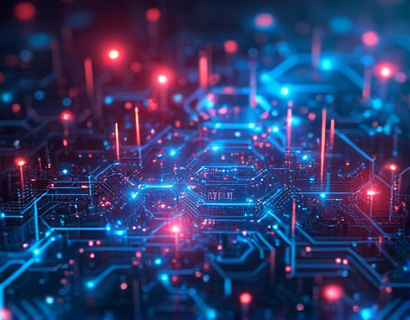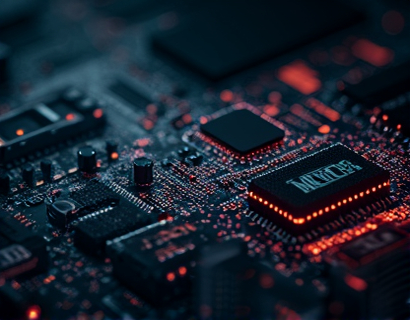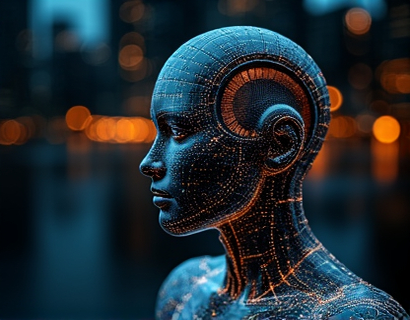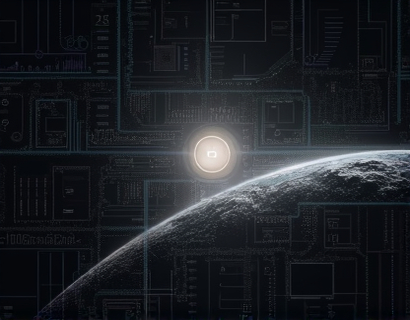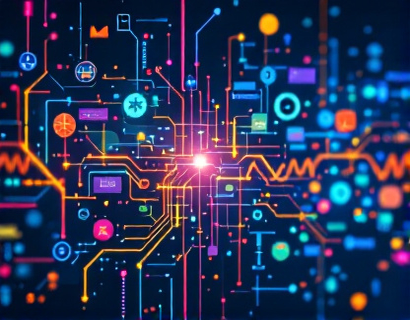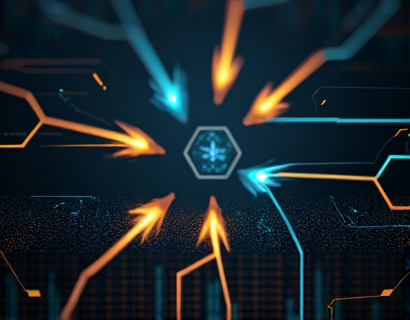Decentralized Productivity: Harnessing AI and Crypto for Next-Gen Digital Solutions
The intersection of cryptocurrency and artificial intelligence (AI) is giving rise to a new era of decentralized productivity tools and digital solutions. This synergy is not only revolutionizing how we approach digital workflows but also redefining user experiences through innovative applications. As we delve into this topic, it's essential to understand the foundational technologies driving this transformation and their potential to reshape the digital landscape.
Cryptocurrency, since its inception with Bitcoin, has been more than just a digital currency. It has introduced a decentralized paradigm that extends beyond finance, impacting various sectors including technology, governance, and productivity. The underlying blockchain technology ensures transparency, security, and immutability, making it an ideal foundation for building trustless and decentralized systems.
AI, on the other hand, has been rapidly advancing, enabling machines to perform tasks that traditionally required human intelligence. From natural language processing to machine learning and computer vision, AI is becoming increasingly integrated into our daily lives. When combined with the decentralized nature of blockchain, AI can operate in a more transparent, secure, and efficient manner, leading to enhanced productivity and user experiences.
The convergence of these technologies is giving birth to decentralized applications (dApps) that leverage AI to offer smarter, more autonomous solutions. These dApps are built on blockchain networks, ensuring that they are not controlled by any single entity, thus promoting a more democratic and user-centric approach to digital productivity.
Decentralized Workflows: The Future of Productivity
Traditional workflows often involve centralized platforms and intermediaries, which can introduce bottlenecks, security risks, and privacy concerns. Decentralized workflows, powered by blockchain and AI, eliminate these issues by distributing control and data across a network of nodes. This decentralization not only enhances security but also improves efficiency and transparency.
For instance, in project management, a decentralized platform can streamline task assignments, progress tracking, and collaboration among team members without the need for a central authority. AI can automate routine tasks, provide predictive analytics for project timelines, and offer real-time insights to optimize workflows. This combination ensures that teams can focus on high-value activities while minimizing administrative overhead.
Another area where decentralized productivity shines is in content creation and distribution. Decentralized content platforms can leverage AI to curate and recommend content based on user preferences, ensuring a more personalized and engaging experience. Creators can publish and monetize their work directly, without relying on intermediaries, thus retaining more control and revenue.
Smart Contracts: Automating Digital Agreements
Smart contracts are self-executing contracts with the terms of the agreement directly written into code. They run on blockchain networks, automatically enforcing and executing the terms when predefined conditions are met. This automation reduces the need for intermediaries, speeds up processes, and minimizes the risk of fraud.
In the context of productivity, smart contracts can be used to manage various aspects of work, such as payment settlements, access control, and compliance. For example, in a freelance marketplace, a smart contract can automatically release payment to a freelancer once the client confirms the completion of a task. This not only speeds up the payment process but also ensures that both parties adhere to the agreed terms.
AI can further enhance smart contracts by providing intelligent logic and decision-making capabilities. Machine learning algorithms can analyze historical data to predict outcomes, optimize contract terms, and identify potential risks. This synergy between smart contracts and AI creates a robust framework for automating complex digital workflows.
Decentralized Identity and Access Management
Identity verification and access management are critical components of any digital workflow. Traditional systems often rely on centralized databases, which can be vulnerable to breaches and misuse. Decentralized identity solutions, powered by blockchain and AI, offer a more secure and user-controlled approach.
Decentralized identity (DID) systems allow users to own and manage their digital identities without relying on third parties. AI can enhance these systems by providing advanced authentication methods, such as biometric verification and behavioral analysis, to ensure that only authorized users access sensitive information and resources.
In a decentralized access management system, permissions and roles can be managed through smart contracts, ensuring that access is granted based on predefined conditions. This not only enhances security but also provides a clear audit trail, making it easier to track and manage user access.
AI-Driven Decentralized Marketplaces
Decentralized marketplaces are another exciting application of blockchain and AI in productivity. These platforms enable peer-to-peer transactions without intermediaries, allowing users to buy, sell, and exchange goods and services directly. AI can enhance these marketplaces by providing intelligent matching algorithms, price optimization, and fraud detection.
For example, a decentralized job board can use AI to match job seekers with suitable positions based on skills, experience, and preferences. The platform can also automate the application process, verify credentials through decentralized identity systems, and facilitate secure payments using cryptocurrency. This creates a more efficient and transparent job market.
Similarly, decentralized supply chain platforms can leverage AI to optimize logistics, predict demand, and ensure transparency at every stage of the supply chain. This not only improves efficiency but also builds trust among all participants by providing verifiable data and traceability.
Challenges and Considerations
While the potential of decentralized productivity solutions is vast, there are several challenges and considerations that need to be addressed. One of the primary challenges is scalability. Blockchain networks, especially those using proof-of-work consensus mechanisms, can struggle with high transaction volumes and slow processing times. However, the development of more efficient consensus algorithms and layer 2 solutions is addressing these issues.
Another challenge is user adoption. The complexity of blockchain and AI technologies can be daunting for many users. Education and user-friendly interfaces are crucial to making these solutions accessible and appealing to a broader audience. Additionally, regulatory frameworks are still evolving, and compliance remains a significant consideration for decentralized platforms.
Privacy is also a critical concern. While blockchain offers transparency, it can also expose sensitive information if not properly managed. Implementing privacy-preserving techniques, such as zero-knowledge proofs and data encryption, is essential to protect user data and maintain trust in these systems.
The Future of Decentralized Productivity
As blockchain and AI technologies continue to mature, the possibilities for decentralized productivity solutions will only expand. We can expect to see more sophisticated dApps that integrate multiple functionalities, from project management and content creation to financial services and supply chain management.
The rise of Web 3.0, a decentralized internet powered by blockchain, will further accelerate this trend. Web 3.0 aims to give users more control over their data and online experiences, aligning perfectly with the principles of decentralized productivity. AI will play a pivotal role in making these experiences seamless and intuitive.
In conclusion, the synergy of cryptocurrency and AI is paving the way for a new era of decentralized productivity. By leveraging the strengths of both technologies, we can create more secure, efficient, and user-centric digital solutions. As we continue to explore and innovate in this space, the future of digital workflows looks brighter and more promising than ever.




